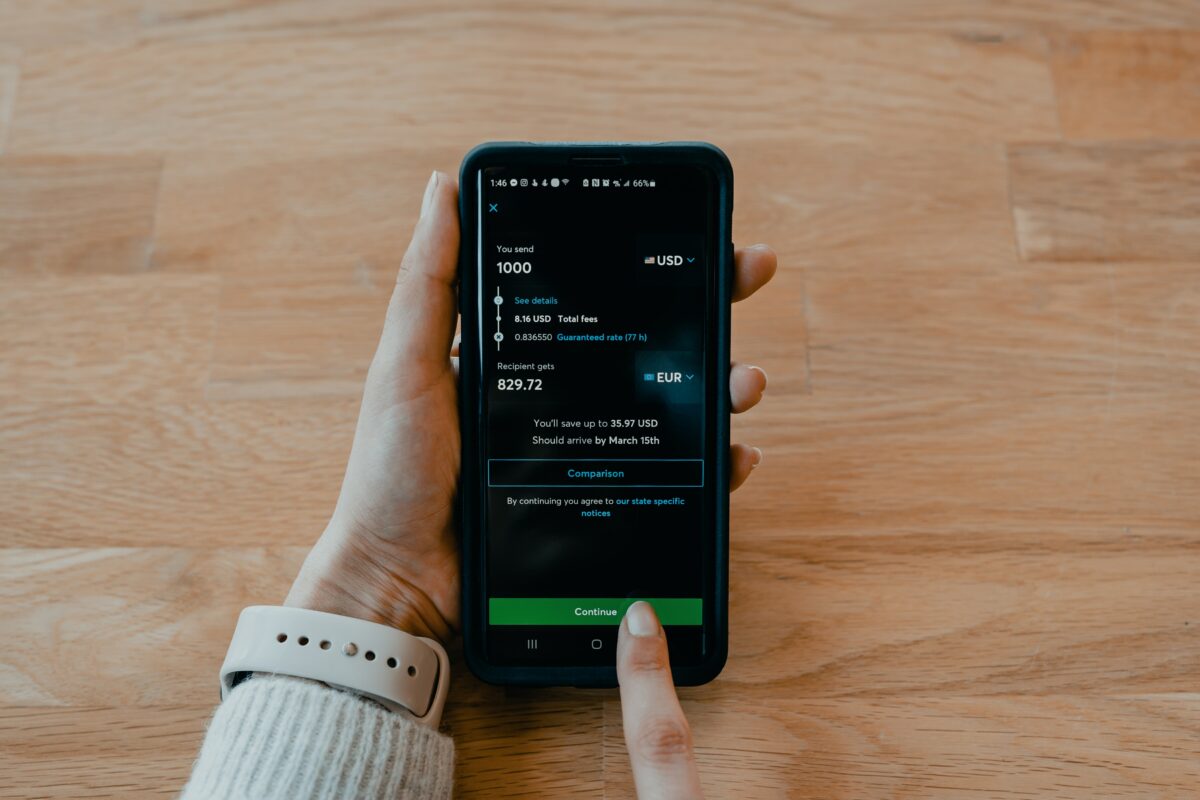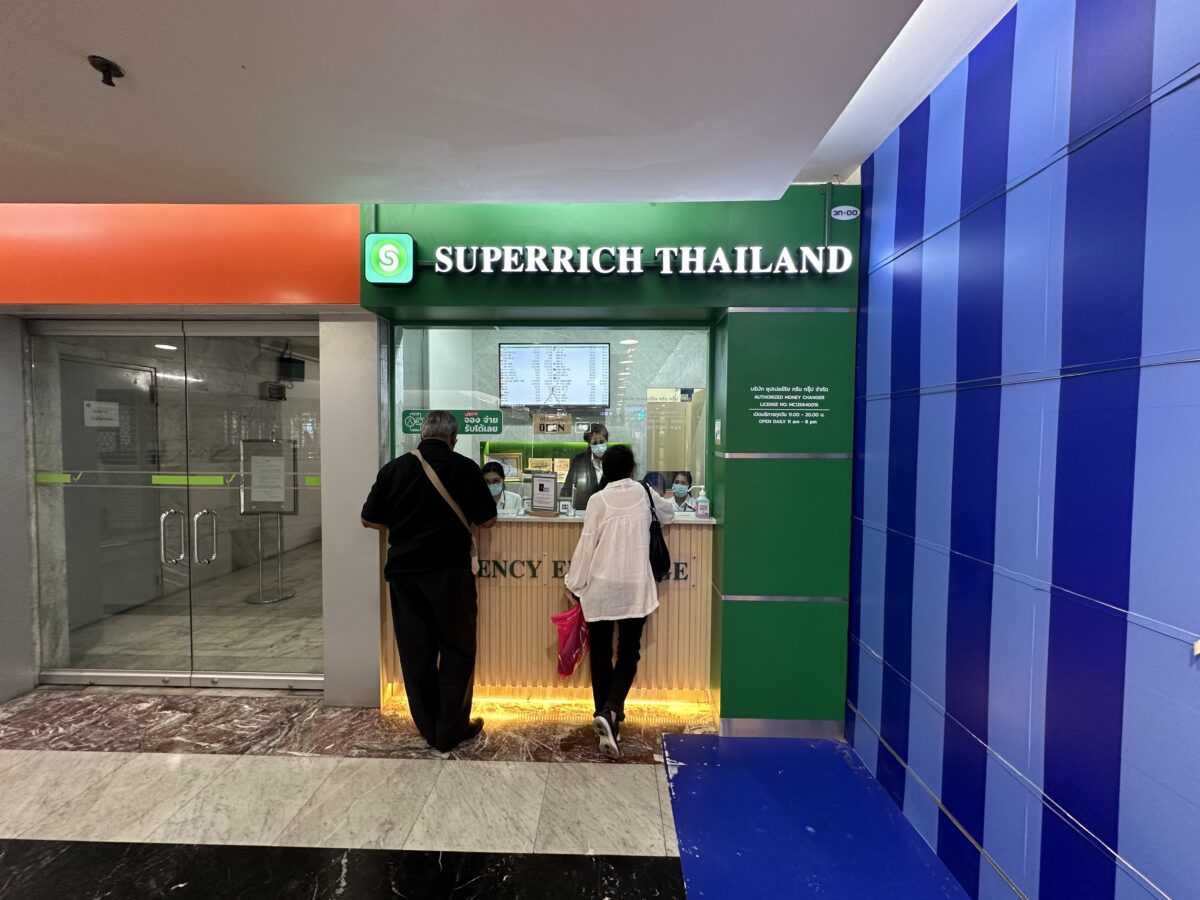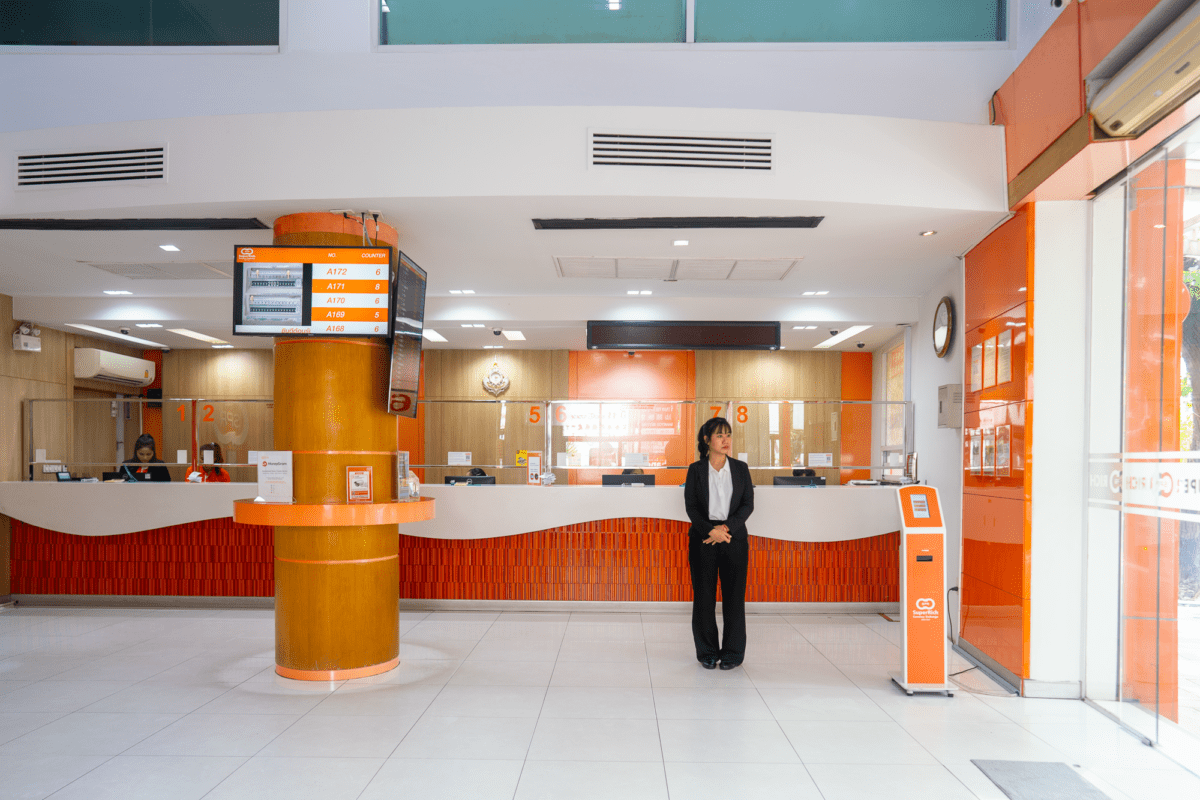This website is made possible by readers. I may earn a small commission when you buy through the links in this article at no extra cost to you. Learn more.
As a huge proponent of cashless payment, I am constantly looking for ways to not use cash, even especially when I am abroad. Bangkok was the go-to destination for broke young Singaporeans but it has been a while since I’ve visited. So when I was in town to attend a conference recently, I decided to write this article on the cashless situation which I had a horrendous time trying to find out about online.
How cashless is Bangkok? How to use QR code payment in Thailand as a Tourist
Well, very cashless. 99.9% of shops and even street-side vendors have a QR code, mostly through PromptPay. The caveat is that one can only use PromptPay if you have a Thai bank account, which unfortunately eliminates this option for those visiting.
Credit card acceptance is limited to established shops, so mileage may vary. Even some of the hostels I have been to didn’t accept credit cards.
Using PromptPay via DBS PayLah!
I thought Singaporeans might have a silver lining when I learned that DBS PayLah! allows you to scan PromptPay QR codes. The markup from the market exchange rate is 2%, still doable if you are in a pinch.
Similar services to read PromptPay QR codes are provided by a number of Asian payment services like Octopus in Hong Kong.
The actual experience is less than desirable. My first meal was at a nice restaurant called Addictions near Terminal 21. I loaded my PayLah! app and scanned the code only to be met with an error that said the code was not recognized. I struggled for five minutes while the staff waited patiently before giving up and using cash.
Upon further digging, I found that PayLah! only reads QR codes that are tagged to registered businesses, effectively eliminating most of the street hawkers. Even the restaurant, which looked like a full business, did not have a QR code tagged to a business entity.
But, it was when I tried to use it for Shopee, which accepts PromptPay that I had the worst experience. I paid via the QR code and my PayLah! app shows me a success screen but the purchase remained unpaid. I contacted customer support immediately through the painful use of Google translate but it seems like Shopee cannot detect the payment automatically and the payment period expired.
Then I had to go through the excruciating process of getting verified for ShopeePay to get my refund.
PAY&TOUR Card
KBank offers a prepaid card that you can top up with foreign currency and use QR code payment through their app called PAY&TOUR. I have not tried this method but a few things prevent me from doing so.
This used to be an ad.
But no one likes ads, so I got rid of them. If my articles helped you, I ask for your support so I can continue to provide unbiased reviews and recommendations. Every cent donated through Patreon will go into improving the quality of this site.
- You can only get this card from the KBank foreign exchange booth at airports.
- I've heard the app is very slow.
- The exchange rates are atrocious.
Do you have experience with this method? Tell me about your experience in the comments.
MoretaPay
I stumbled onto a Reddit comment that says that MoretaPay works and decided to check it out. It requires a US bank account which you can create with Wise.
You don't have to live in the US or Thailand. I was able to verify this with my Singapore ID. Although the automated ID verification failed, I requested a manual verification through customer support. This is a US service, so the penny drop, the small amount they send to verify your account, only happens on US time (after 9 pm BKK time). I was able to verify through my connected Wise account instead.
Once I did that, I sent about $300 to my MoretaPay account. It takes a long time to get the funds, exactly 6 days for me since I sent it on a Friday night.
Similar to other cross-border PromptPay replacements, this only works for business QR codes, which I estimate to be 5% of all QR codes I tried scanning around Thailand. I was only able to use it a total of 8 times in the two weeks there. The markup is 3%.
Withdrawal is a manual process. You have to send an email in. The silver lining was much faster than the deposit.
I would only recommend MoretaPay if you really want to go cashless for the few instances where the QR is a business one.
The Best Way to Go Cashless in Thailand for Tourists
The best way is absolutely with a Wise card. It charges a spot rate (the rate you get when you search on Google) with a small fee. Even with the fee, it is way cheaper than the well-known money changers like SuperRich. Most POS machines are contactless so you can just tap the card.
I designed a thing.

I found a 100 year old company that would create these heirloom quality canisters for me. They are handmade and will keep your tea leaves, coffee beans or anything that you need dry for years to come.
or read review
The biggest problem is trying to find places that accept credit cards. If you go to nice-ish restaurants, they would accept it with no issues. If you go to street-side restaurants, they would likely charge an extra 3% to use a credit card or not accept it at all.
Either way, you'll be hard-pressed to survive Thailand without baht.

Wise vs Revolut
Some of you might think that Revolut might be another good option. But Revolut regards THB as illiquid currency and charges a 1.5% markup on the spot rate. This is on top of the 1.5% it adds on weekends, which makes it a 3% markup. In other words, Wise, or even a bad money changer, will definitely give you the better rate.
Checking the conversion at the same time, I found that 10,000 JPY would give me 2552.7 THB on Revolut and 2558.2 THB on Wise. Note that this still loses out to the top moneychangers like SuperRich (2560 THB) and Siam Exchange (2565 THB).
Transferring to a friend via Wise
Another thing I tried was doing a bank transfer to a local who was willing to give me cash back as a way to circumvent the ATM fees.
I did two transfers on my last trip as shown
| I sent | Fees | Rate | Friend received |
| 79.15 USD | 1.68 USD | 1 USD = 36.6535 THB | 2839.5 THB |
| 8.17 USD | 1.27 USD | 1 USD = 36.6755 THB | 253 THB |
Notice that despite the difference in amount, the fees were at least 1 USD to cover the bank-side cost. In other words, it is not worth it to transfer a small amount to a Thai bank account.
How to pay on the bus in Bangkok?
I used Grab exclusively for the first couple of days of my trip because I knew it would work seamlessly with my Wise card. However, no matter how much you save with currency exchange fees, you can’t beat the low cost of taking a bus, which costs anywhere from 10 to 25 baht with 10 baht being the most common.
With advanced card systems in cities like Singapore and Tokyo where I lived, I was nervous at first. The system of Bangkok bus seemed tricky. But here is how I do it each time.
The gist is that you need to know your destination and pay cash directly to the attendant. Here’s how I do it.
- Before boarding the bus, make sure I have at least 25 baht of loose change. They can be notes or coins. If you use larger notes, the attendant might not be able to give you the change.
- Assuming you used Google Maps to figure out the route, copy the destination and translate it to Thai in Google Translate. Then, copy it onto Apple notes. I personally increased the font size so it is easy for the attendant to read it.
- Board the bus, and take a seat if available. When the attendant approaches you, show her the destination name and hold out 25 baht. She will take what is needed and hand you the change and a ticket.
This is the most optimal way I’ve found to work each time as long as you prepare it. The bus frequency can be pretty brutal so I am sure you have time to get ready.
Which is the best money changer in Bangkok?
There are tons of money changers, especially in the touristy area, but here are some that are known for offering the best rate.
If you are in Thailand for the long term, you want to note that there’s a superior tier rate for those exchanging more than USD 1000 at a time. You might want to consider doing that if you are not afraid of pickpockets.
Superrich
The brand name you would hear the most is Superrich. Note that there are two Superrich brands, which you can easily tell apart by their brand colors, orange (or Superrich 1965) and green (or Superrich Thailand).

The orange is the original but it does not mean that it will offer the best rate. I’ve heard that the green is started by a disgruntled partner of the orange. Either one has a great reputation and will give you a better rate than any random money changer.


A few things to take note
- There might be more copycats of the Superrich brand and best to check the outlets on their website
- The queues are usually gruelingly long. And sometimes you might not save as much compared to a lesser-known money changer. If you are changing small amounts, you might want to reconsider going out of your way.
- Like most money changers, your passport is required. Don’t try to get by with a copy or some other ID. You will be rejected. Bring your original passport.
- Your notes need to be in impeccable condition. I mean no marks and no tears, no matter how small. The staff will inspect them carefully and reject them if there is even a slight flaw. You can be a Karen all you want but they will just ignore you.
- The rates on the site do not guarantee you the rate at the store. Each outlet has different rates. I found that the rates on the site are relative and do tell you which site offers the best rate compared to other outlets.
Siam Exchange
Another brand I’ve heard often is Siam Exchange. Based on their site, they do indeed offer the best rate, even compared to Superrich and Wise. However, they only have one outlet and the Grab fare down is seldom worth the amount you save.
Luckily, it’s near spots like MBK Center which you will likely have on your list of places to go in Bangkok,

When I was there on a weekday afternoon, there was no queue. Instead of an electronic board, the staff handed me a paper with the rates. The SGD rate was the same as Superrich Thailand (green one), which also didn’t have much of a queue across the street at MBK Center.
So, there is no guaranteed best rate most of the time, so it might just be less hassle to change at the nearest outlet of any of the above brands.
Withdraw from ATMs in Thailand without fees (with UOB)
In my latest trip to Thailand, I finally discovered a way, as a Singaporean with an UOB bank account, to get around the 220 THB ATM fees.
You can withdraw money from your UOB Bank savings account without fees in Thailand. I can't say for sure it works with UOB Banks around the world, but based on the UOB Singapore FAQ, it says “Yes, you can use your local ATM card to withdraw cash in UOB ATMs in Malaysia, Thailand and Indonesia. Overseas cash withdrawals and balance enquiries can be performed at all UOB ATMs in Malaysia, Indonesia and Thailand.”
I can only assume that you can withdraw from Singapore, Malaysia, and Indonesia UOB bank accounts. I didn't bring along my ATM card, but if you have the UOB TMRW app, you can choose a credit card to function as your ATM card. From the home screen, choose the credit card > Services > Enable ATM Withdrawal > Select primary account to withdraw from.
I went to the UOB branch at level 3 of Siam Paragon to try it out. UOB branches are all around Thailand so this is not limited to Bangkok. I tried to withdraw a few times, but it says wrong pin. So, I reset my card pin from the same service menu and enable overseas usage just to be sure and it worked.
The question here is what is the rate? I withdrew 14,000 THB and it costs 570.96 SGD, which is 24.52 THB/SGD with no ATM fees.
Compare this to Wise app and entering the same amount in the online calculator, 14,000 THB would cost 564.09 and you'll have to add 220 THB charged by Thai ATMs. There are no Wise fees on ATM withdrawals up to 350 SGD per month, so in this case, 1.5% fee would be applied to the amount over the limit, which would come up to a rate of approximately 25.07 THB/SGD. This means I saved 12.63 SGD on my withdrawal.
If you only withdraw up to your limit of 350 SGD, then the rate will be more palatable at 24.43, but still worse off than UOB.
A money changer will almost always offer a better rate, but if you don't cash to change from, this might be the method for you!
How to get a Thai bank account as a tourist
I’ve read that it was once possible with a guarantor letter. However, the latest as of April 26th, 2023 is that this is no longer possible.
I waltzed down to my embassy only to be told that due to a recent policy change, I would not be able to get an account. Even with a letter. Tough luck.
The only way you can get one is through an agency handling such matters. I've heard it costs about 4500 THB and up, although I haven't gone through the process myself and do not think it is worth it if you are not here most of the year.
Conclusion
Getting sorted in Thailand needs a little more work with the general lack of cashless payments. Since the best food in Thailand is street food, I'd say it is worth the effort.
Tagged bangkok onebag travel thailand wise